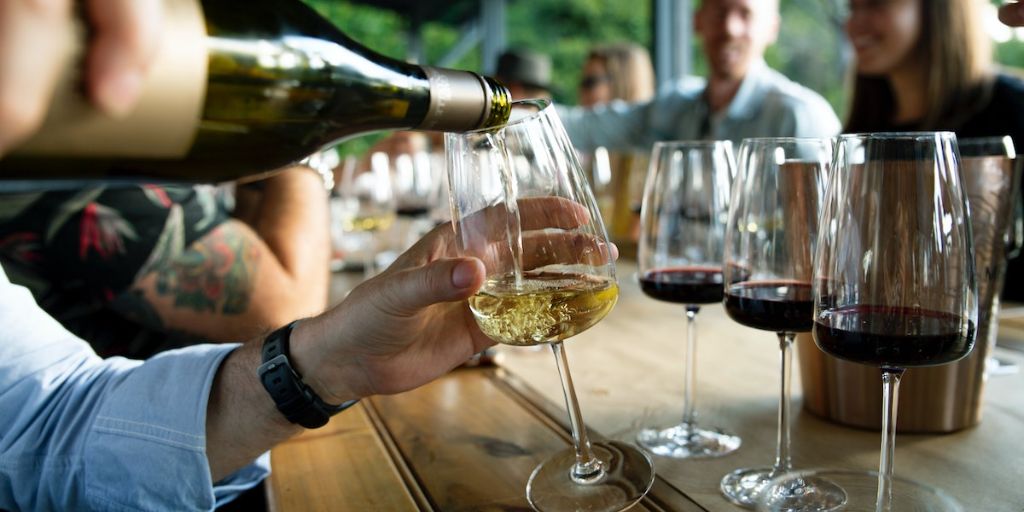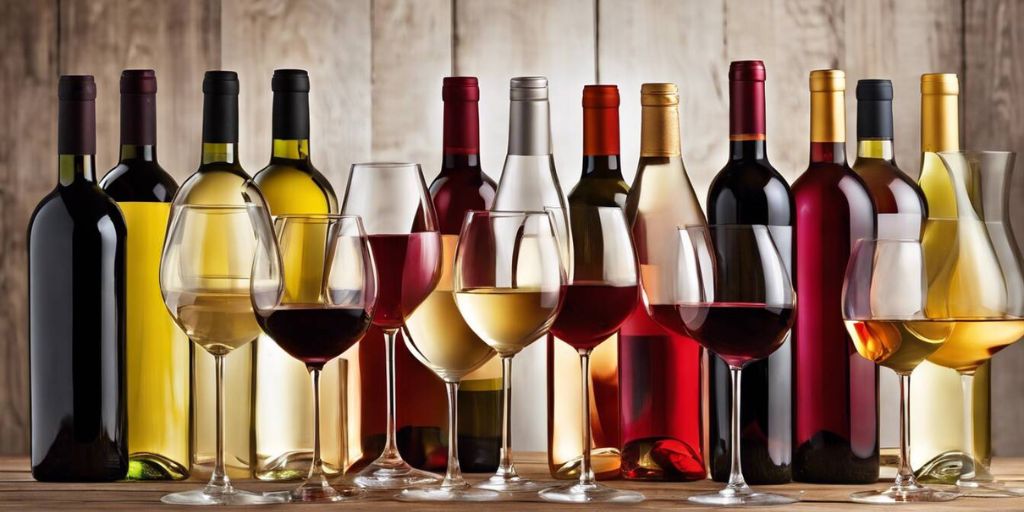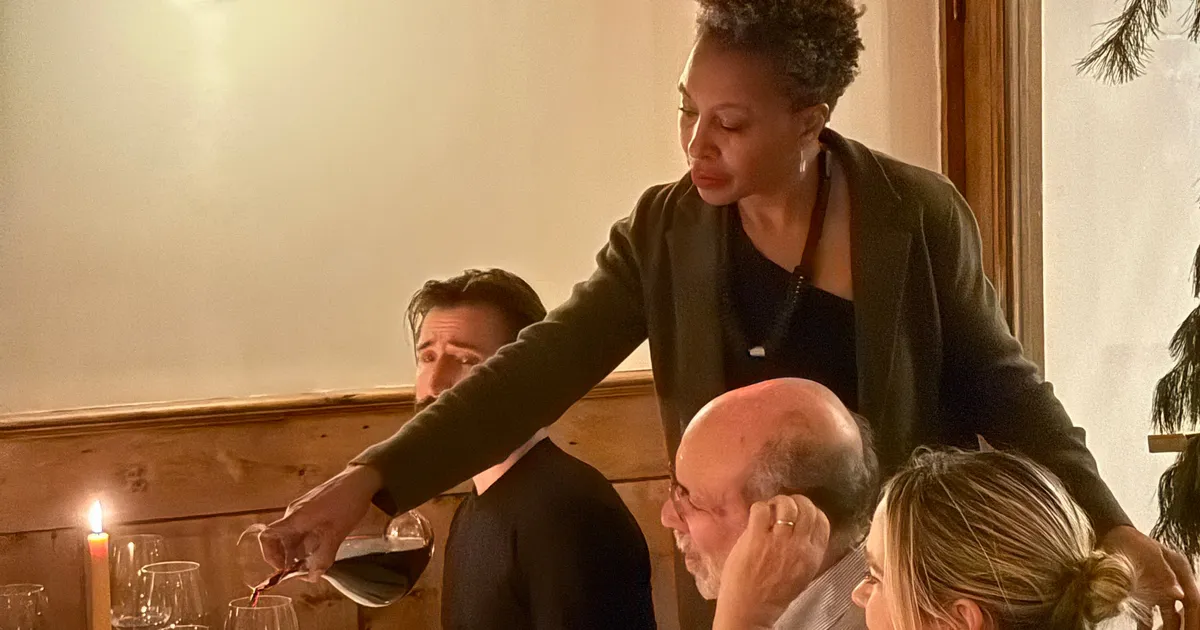Wine tasting is an enjoyable and enlightening experience, whether you’re attending a formal wine tasting event or simply sipping a glass at home.
However, for beginners, the world of wine tasting can feel overwhelming with all the terminology, techniques, and wine varieties to consider. Understanding the basics can make the process more enjoyable and enhance your ability to appreciate the wines you’re sampling.
This guide will walk you through the essential steps, tips, and tricks to help you get the most out of your wine tasting experience.
1. Choosing the Right Setting
The first step in wine tasting is finding the right environment. While professional wine tastings often take place at wineries, wine shops, or tasting rooms, you can also host a wine tasting at home. Whatever setting you choose, keep in mind that you want to be in a space free from distractions and strong odors.
Factors to Consider:
-
Lighting: Ideally, use natural light, as it will help you assess the wine’s color properly. Avoid overly dim or bright lights.
-
Temperature: Room temperature is usually best for tasting wine. Red wines should be slightly cooler than room temperature (around 60–65°F), and white wines should be chilled, but not too cold (around 45–50°F).
-
Odors: Ensure that the space is free from any competing smells that might affect your perception of the wine, such as strong perfumes, food odors, or cleaning products.
2. Selecting Wines for Tasting
If you’re new to wine tasting, you don’t need to sample a huge range of wines in one session. Start by focusing on a few different types of wines—ideally, one white, one red, and one dessert wine—so you can experience the different styles.
Types of Wine to Consider:
-
White Wine: Start with something light and refreshing like a Sauvignon Blanc or Pinot Grigio.
-
Red Wine: Choose a medium-bodied red like a Merlot or Pinot Noir, which are generally approachable for beginners.
-
Sparkling or Dessert Wine: A Prosecco or a late-harvest Riesling can provide a nice contrast to your other wines.
You can also opt for a specific theme for your tasting, such as wines from a particular region, country, or grape variety.
3. The Importance of Glassware
The glass you use for wine tasting matters. While it’s not necessary to have expensive glassware, a proper wine glass can help enhance your tasting experience. Wine glasses are designed with a bowl shape that allows the wine to aerate, which releases its aromas and flavors.
Tips for Glassware:
-
Use a Tulip-Shaped Glass: This type of glass helps concentrate the wine’s aromas and direct them toward your nose. It’s the best option for both red and white wines.
-
Don’t Overfill: Fill your glass only about one-third of the way. This allows room for the wine to move around, releasing its aromas and allowing you to swirl it effectively.
4. Look: Observing the Wine’s Color
Before you even take a sip, take a moment to observe the wine’s appearance. Hold your glass by the stem against a white background to examine the color, clarity, and viscosity of the wine.
What to Look For:
-
Clarity: A clear wine is typically a sign of good quality, while haziness might indicate a flaw or unfiltered wine. However, some wines (like natural wines) may have some cloudiness, which is normal.
-
Color: The color of the wine can indicate its age and grape variety. Younger white wines tend to be pale yellow or greenish, while older white wines are more golden. Red wines can range from bright ruby red (young) to deep, dark garnet (older).
-
Legs (Tears): Swirl the wine gently in your glass and observe how it moves. The wine might leave streaks or “legs” on the side of the glass, which can indicate its alcohol content and viscosity. Thick, slow-moving legs often suggest a wine with higher alcohol or sugar content.
5. Smell: Assessing the Wine’s Aromas
Next, bring the glass to your nose and inhale deeply. Smelling the wine is one of the most important parts of the tasting process. The aromas will give you a sense of the wine’s complexity and flavor profile.
Steps for Smelling:
-
Take a Quick Sniff: The first quick sniff will give you an initial impression of the wine’s aroma. It may smell fruity, floral, herbal, or earthy.
-
Smell Again: After your initial sniff, give the wine a gentle swirl to release more aromas. This agitation helps the wine release volatile compounds that contribute to its bouquet.
-
Identify Aromas: Try to identify the primary and secondary aromas. Primary aromas come from the grape, such as citrus or berry notes, while secondary aromas come from the fermentation process (e.g., buttery or yeasty smells).
Remember, there’s no right or wrong when it comes to identifying aromas—simply focus on what you notice and enjoy the process of discovering different scents.
6. Taste: Taking the First Sip
Now comes the most enjoyable part—tasting the wine! Take a small sip and let the wine linger in your mouth for a few seconds. Pay attention to the different elements that make up the flavor.
Elements to Focus On:
-
Sweetness: Is the wine sweet or dry? Most wines fall somewhere between these extremes, with dry wines having little to no residual sugar.
-
Acidity: Acidity gives a wine its crisp, refreshing quality. Wines with higher acidity (like Sauvignon Blanc) can feel bright and zesty.
-
Tannins (for Red Wines): Tannins add structure and a drying sensation to red wines. Notice if the wine feels smooth or if it has a more astringent or tannic quality.

-
Body: As you taste the wine, pay attention to its weight and mouthfeel. Does it feel light and refreshing, or full-bodied and rich?
-
Finish: After swallowing, notice how long the taste lingers on your palate. A long, smooth finish is often a sign of a high-quality wine.
7. Pairing with Food
While tasting wine on its own is a great experience, pairing it with food can enhance both the wine and the meal. Wine pairing is all about balance—complementing the flavors of the wine with the flavors in the dish.
Basic Pairing Guidelines:
-
White Wines: Often pair well with lighter dishes like seafood, poultry, and salads.
-
Red Wines: Generally pair better with richer foods such as red meats, pastas with tomato-based sauces, and hearty stews.
-
Sparkling Wines: Great with a wide range of dishes, including fried foods, seafood, and salty snacks.
8. Take Notes and Experiment
Wine tasting is a subjective experience, and it’s essential to keep track of what you like and dislike. Consider taking notes during your tastings, writing down the wines’ characteristics, flavors, and any memorable experiences.
Suggestions for Notes:
-
Write down the wine’s name, producer, vintage, and region.
-
Note the wine’s appearance, aroma, taste, and overall impression.
-
Consider noting food pairings that worked well with the wine.
The more you taste, the better you’ll become at identifying specific flavors and preferences.


